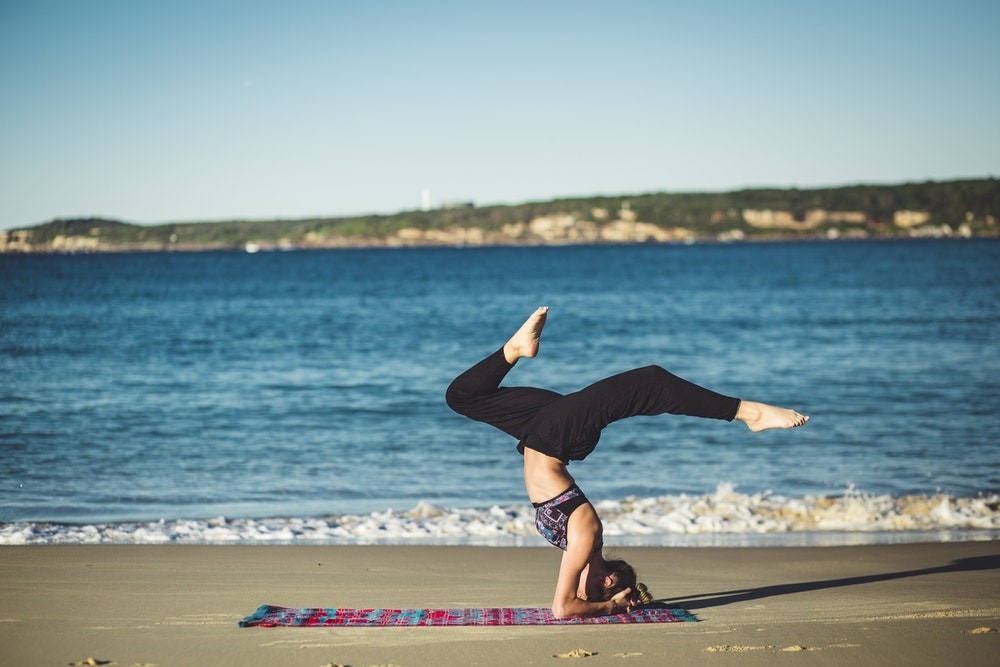When it comes to performing yoga as your daily workout, there are plenty of benefits involved. Not only does this activity help tone muscles and maintain strength, it also promotes bone and joint health, which leads to an improved musculoskeletal system. However, you need to keep in mind that it has its limitations as well.
At the end of the day, yoga is not a high-intensity interval training, which means it doesn’t have any effects on cardiovascular health. In addition, hardcore exercise lovers won’t get a kick out of it and might not even sustain their capacity through it. Yoga is firstly meant to relax and soothe you, so if you want to break a sweat it might not be for you.
The Best Poses
All in all, it’s harder to achieve the same fitness goals through yoga as you would through a more traditional gym session of aerobics, weightlifting or indoor cycling. But yoga does tone your body so consider this five-step yoga workout that is incredibly straightforward, while still engaging your entire body:
-
Downward-Facing Dog
The downward-facing dog is the simplest pose, which makes it an ideal place to start your routine. Begin by standing up straight, or what is known to yoga enthusiasts as Tadasana, or the mountain pose. Then proceed to reach your hands down to the floor and slowly lower to place your hands three to four feet in front of your legs.
Lift your hips by pushing into your palms and then press back into your heels and flatten your back as much as possible. Even though this is the most basic beginner position you will learn in any yoga class, it also has incredible benefits on the body.
It stretches your shoulders, hamstrings, and calves, as well as the feet and hands. Furthermore, it helps strengthen and tone both the arms and the legs, as well as your upper back. Once you master the technique behind it, it will become easier and easier to start out any session in this posture, as well as transition seamlessly into others.
-
Three-Legged Dog
The three-legged dog is a pose which is easy to transition in from the down dog because it’s a variation of it that targets your gluteal muscles as well, a.k.a. your buttocks and their surrounding area. To engage in it, step your feet together while in downwards-facing mode and lift your right leg as high as possible.
While keeping your shoulders parallel to the floor, hold this pose for five deep breaths, then lower your right leg and repeat it with the left one. This is a great way to further the body toning process even more. Once you’ve exercised both sides, it’s time to return to down dog in preparation for the next step.
-
Warrior 1&2
The three variations of the warrior pose, also known as Virabhadrasana in Sanskrit, are staple movements for any yoga routine. To make the transition into the first one, step your right foot forward between your hands and rise, joining your arms and palms together towards the sky. This is warrior one.
Now it’s time for warrior two, and the transition is as easy as they come. Open your arms, hips, and chest to embrace the posture. Your right knee should ideally be over your ankle, while the front thigh is held parallel to the floor. Look straight past your right hand and take five deep breaths to hold, then rotate to the other side and do five more.
-
Half Moon
Now that you’ve got the beginner steps of the routine over with, it’s time to transition into something a bit more challenging. The half moon is a balancing yoga pose that serves to engage your core in the workout, while at the same time toning the outer thighs, gluteal muscles, and shoulders.
It is a natural continuation of the warrior two pose, but you will need to be steady on your feet at this point to pull it off. First, hop off your back foot and lower your right hand on the floor, aligning it with your shoulder. To ease yourself into it, you can bend your knee slightly as well. Then put your left arm into the air and extend the left leg behind you.
This is the half moon posture, customarily known as the Ardha Chandrasana. Hold it for five deep breaths, then repeat on the other side. The aim of integrating this particular motion in your sessions is to master the art of equilibrium. An important part of yoga is being in tune with your entire body.
-
Revolve Lunge
To end your yoga routine on a high note, the revolve lunge is the way to go. This complex movement targets your shoulders, arms, hamstrings, quads, abs, butt, and calves, thus engaging your entire body and toning it in the process. Transition back from the half-moon into a deep lunge to start, with your arms raised to the sky.
Extend your legs until they are straight, then flex down and put your left arm forward and your right arm back. Then pull them towards your face and back up, repeating the motion on the other side this time. Do ten reps on the right and ten on the left to achieve the best results and finish your workout for the day.
Final Thoughts
Even though yoga is not an intense workout by any means, approaching it through a plain, yet highly engaging routine will help tone your body, increase core strength, improve your balance and make you feel great about yourself. So, are you ready to give it a go?
Guest Post By Luke Mitchell
DefendYourHealthcare.Us

